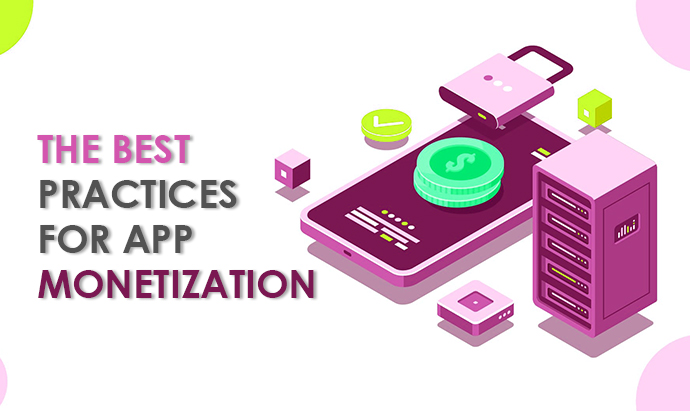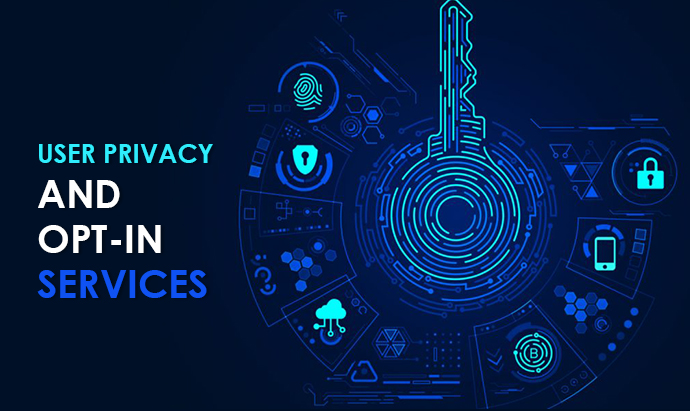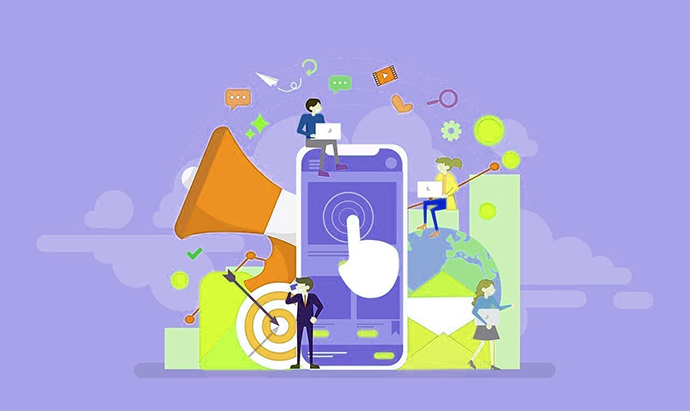
TABLE OF CONTENTS
This guide will teach you all you need to know about monetizing your app. We'll go over the advantages and disadvantages of various tactics. You'll learn how to improve your app and make a lot of money with it. We'll also look at app monetization trends and hybrid monetization. So buckle up and get ready to monetize your app's user base.
Because this is a comprehensive guide, it will take some time to read. Fortunately, we've included some helpful links throughout to assist you in finding the sections you're looking for.
All app owners and developers should read this guidance. Some of you will be in the early stages of app monetization, whether you have a free or premium app. Some will have prior expertise with hybrid app monetization.
Anyone who wants to make money from their mobile app should read this tutorial. In any case, we hope that this article has answered all of your questions about app monetization. You'll discover how it works and how to make sure your mobile app generates the most income.
Some app types are better suited to certain monetization models than others.
Some apps concentrate on a single component of app monetization, while others cover several. You'll need to make money from your software as a developer. It might be difficult to keep afloat in the app economy.
Displaying ads without filters everywhere in your app degrades the user experience and, in the long run, reduces income. Consider ad quality as a balancing factor between user experience and ad profitability. Instead of removing the entire demand source, ad quality automation systems enable you to filter out the improper types of ads for your users — individual ads and categories.To put it another way, you don't have to toss away a whole carton of fruit just because one apple is poor.
Making a profit is the ultimate goal of any company venture. Today, we decided to undertake some reverse engineering and assist mobile developers in determining which business model will be used to monetize their app. To that end, here's a rundown of the most prevalent app monetization strategies, along with their benefits and drawbacks.
Developers must now recognise that consumers are picky, and they must properly balance the user experience with a monetization strategy to ensure that both the firm and the user benefit. In many ways, UX considerations and income generation can be integrated; yet, knowing when to pivot and alter the business model is also crucial to long-term success.
-
Importance of User Experience

When engaging with a system, the user experience refers to how a person feels. This can be a website, a smartphone app, desktop software, or any other type of human-device interaction.
User experience is significant since it aims to meet the needs of the user. Its goal is to provide good experiences that encourage users to stick with a product or brand. Furthermore, defining customer journeys on your product that are most conducive to commercial success is possible with a meaningful user experience.
Hence, the process of producing and designing goods (digital or physical) that fulfil the needs of the user. It is simple to use, and enjoyable to interact with which is known as user experience design. Its significance stems from the fact that a strong user experience might make the difference between a product that sells or a website that is well used and frequented and one that stays on the shelf unused.
What Makes a Great User Experience?
Everyone's user experience is unique. The most important thing to remember while developing a product is that, while you may have designed it, you may not be a possible user who will utilize it. As a result, we can't presume what a consumer wants or how they require anything.
Writing material that is straightforward to read and comprehend, provides clear instructions, is written by someone who actually understands the topic, considers FAQs, and always addresses the user (by using ‘you' rather than ‘we' in the text) is one way to ensure that the User Experience (UX) is good.
Does UX Design Require Coding?
User Experience (UX) in the context of a website has nothing to do with coding; it refers to the site's design and all of its interactions. Of course, the UX design will need to be created, which will necessitate code. The UX designers, on the other hand, are usually not the ones who write the code; their job is to make sure that the site provides an exceptional end-to-end experience for every user.
The user experience design process is divided into five stages. Investigating and defining the user's wants and desires, as well as determining how these might be addressed Creating the layout, Prototyping the design and, lastly, producing the final working product after any bugs have been ironed out (or website interface).
-
App Monetization Strategies - How Will the App Make Money?

Because the free app industry has always outstripped the paid app market (in terms of earnings and downloads), most people frequently ask, "How much money do apps make?" Have you ever considered how to profit from apps? Before we get into how free applications earn money, it's important to understand that the app boom hasn't (and won't) come to an end.
Despite the fact that the share of paid app income has dropped from 75.9% to 37.8%, the mobile app business is still worth billions of dollars.
When it comes to monetizing your mobile app, you have a lot of options. In this article, we'll look at five prominent app monetization tactics and examine how they could affect app growth and engagement.
Free & Paid App Version
Offering both free and paid versions of your app is a popular app monetization technique. App developers will either limit certain features in the free version to "urge" users to upgrade to the paid app, or monetize the free app with in-app advertising using this strategy.
The advantages of this method are twofold. On the one hand, it gives a free option for consumers to test out the app's basic functions. On the other side, it gives the app developer with a growing user base, which can be used to monetize the app through in-app purchases or advertising.
Free App with In-App Purchases Model
In-app purchases, or IAP, are another popular app monetization approach. The software itself, as well as most of its fundamental functions, is free. However, if the user wants to advance quicker in the app, such as obtain more lives in a game app or access premium features in a dating app, they must pay to play.
Users can still enjoy premium features or functionality without paying in some circumstances. They can use the app for free indefinitely if they are patient enough to wait for certain features to be unlocked or connect with it regularly enough. In other circumstances, such alternatives will not be available, and app developers will only offer a limited amount of free items, with others only available through in-app payment.
Free App with Subscription Model
Some developers prefer to design subscription-based apps that are free to download. The app is made free to download with limited access to the content or services given using this strategy. To take advantage of all of the features, customers must subscribe to a subscription plan. This app monetization model is widespread in service-oriented apps (such as Headspace, a meditation app) and content-centric apps (such as news apps).
When consumers search for similar material, the app can be easily identified in the app stores as a free app using this strategy. This is a fantastic way to assist developers in establishing a user base and converting that user base into paid app subscribers.
Paid App Model
In some circumstances, developers will only offer a paid version of their programme. Typically, these apps provide one-of-a-kind value that is difficult to get elsewhere. This is the most popular monetization approach used by productivity apps.
If you choose this path, keep in mind that your apps should give enough value or unique features to suit certain consumer needs. Otherwise, you'll have a hard time growing your app's user base and generating cash.
-
The Best Practices for App Monetization

App monetization refers to how a company can make money from their mobile app by using their user base. While many businesses hope that developing and deploying a mobile app will result in immediate revenue, this isn't the case.
Unfortunately, the procedure is far more complicated. With over 1.8 million apps accessible in Apple's App Store and over 2.5 million apps available on Google Play, leaders must not only develop an app that users enjoy, but they must also adopt the appropriate app monetization approach to convert those users, or profits will be lost.
There are a variety of techniques for accomplishing this, including premium apps, in-app purchases, advertising, and other choices. This article will give you insights into the newest app monetization tactics, whether you're seeking to monetize your app for the first time or looking to optimize the profits of an already successful app.
Pay-Per-Download
This is the most basic and oldest monetization method for apps. Users must pay a one-time fee before installing the app, but once downloaded, they get access to all of its features. While this approach directly links revenue to the number of downloads an app receives, it isn't always the most profitable.
While premium apps predominated in the early days of the app store, customer expectations have since evolved. For one thing, the potential user is unsure about the app's exact fit with their wants and interests. It's tough to persuade someone to pay for something they haven't tried, especially when there are so many free options available. Today, charging a one-time fee can be a stumbling block to expansion.
In-App Purchases
Because the bulk of apps on the market today are free (freemium apps), in-app purchases have grown increasingly popular as a revenue approach. This paradigm lets users buy physical or virtual objects within an app, which is very useful for mobile games (i.e. extra lives, in-game currency).
In-app purchases, when done correctly, allow app publishers to provide genuine value to their customers, resulting in a win-win situation for both the business owner and the user.
While this business strategy may appeal to many entrepreneurs, they should keep in mind that not all customers are prepared to pay for these services. Recent data, however, suggest that in-app spending is becoming more popular. It is critical for those interested in implementing this model to ensure that the user experience is engaging enough to encourage recurring use without purchasing, as well as that the purchase option is appealing.
In-App Advertisement Formats
It's critical to guarantee that adverts are relevant and targeted to a certain user base when adopting an advertising-based revenue model. Ads that are of poor quality, obtrusive, or irrelevant can hinder engagement and retention efforts. As a result, a wide range of ad formats are accessible to allow company owners and marketers to cater to the user experience in a way that isn't intrusive.
-
Interstitials
Mobile advertising with interstitial adverts is a safe bet. An interstitial ad fills the entire mobile screen with the ad creative. Interstitial ads not only provide greater space for ad material, but they also require action. A response is necessary whether the user clicks through or closes the ad.
The placement and frequency of interstitial adverts must be carefully considered. Intrusive advertising, particularly those that take over the user's screen, might irritate a user if they appear too frequently or at times that are inconvenient for the user.
-
Banner Ads
From the user's perspective, banner adverts can appear to be spam. From the top or bottom of the screen, this format will pan into view. Despite the fact that this format is reasonably simple to use, it is usually not warmly welcomed.
This form of advertisement necessitates personalization. Banner advertising must be of excellent quality and targeted, or they may be perceived as annoying and inconvenient.
-
Native Ads
Because they have situational definitions, native ads are the chameleons of in-app advertising. Native advertisements, at their most basic level, blend into an app's design without interfering with the user experience. To put it another way, a native advertisement will take on the appearance and feel of the platform's other content. This format is well-exemplified by Facebook advertising that appears like user-generated content.
-
User Privacy and Opt-in Services

The process of keeping data and vital information from being hacked or altered is known as data protection, sometimes known as data privacy or information privacy. It also includes the gathering and dissemination of data and technology, as well as the public's perception and expectation of privacy, as well as the political and legal implications of such data. Its purpose is to strike a balance between individual privacy and public safety.
Data protection is becoming increasingly important as the amount of data collected and saved on a daily basis grows. As a result, businesses implement procedures that allow data to be restored after it has been corrupted or lost. Here are some of the advantages of data security.
The Opt-in service allows you to create protocols for visitors to determine whether or not you can place a cookie on their device or browser when they visit your site. The Opt-in service is an extension of the Experience Cloud ID (ECID). It allows you to manage which Experience Cloud solutions can create cookies on web pages for visitors before they give their approval. As part of your bigger architecture, the Opt-in service also allows you to create protocols to interact with your Consent Management Platform (CMP) and current systems.
-
Protects Valuable Data
One of the advantages of data protection is that it protects valuable information, which is a significant asset to your business. Many businesses put in place safeguards to prevent unauthorized access to their information.
Not all information in a corporation, for example, must be visible to all employees. Between the employee and the HR department, personal information must be kept confidential. As a result, data protection can assist in keeping such information safe from prying eyes.
-
Stay Ahead of Competition
Keeping your data secure allows you to stay ahead of the competition. Investor confidence will rise as a result of securing your clients' information, which is good for your business. To keep your data safe, you'll need to invest in relevant and current technologies as well as strict data policies. This will assist you in safeguarding your sensitive data from any looming risks.
-
Decreases Development Costs
Installing security into your system ahead of time saves time that may be better spent on other projects. Aside from that, implementing security immediately away might help you avoid data loss by accident. Remember that employing insecure software might cost you a lot of money and time in court, so it's best if you implement security measures right away.
-
Keep Hackers Away
Hackers may find it difficult to gain access to sensitive information if it is protected. This could contain personal information like names, addresses, phone numbers, email accounts, bank account numbers, health information, and so on. You can stop thieves from committing identity theft, phishing scams, and other sorts of fraudulent actions by preserving vital and sensitive data.
-
Negative Effects of Advertising

Many firms use online advertising in their marketing strategies since many consumers purchase online for everything from food and clothing to gadgets and cleaning products. While there are certain advantages to advertising online, such as the opportunity to reach a broad audience and the capacity to track outcomes, there are also some drawbacks.
-
Customers Ignore Ads
Consumers have developed an antipathy to all forms of advertising after becoming accustomed to seeing advertisements on television, hearing radio commercials, and scrolling through adverts in periodicals.
-
Technical Viewing Problems
Website downtime, pauses in website or video loading, and browser issues can affect the number of times and how well customers see online advertisements. When technological problems arise, businesses lose the ability to broadcast advertisements for their products and services, potentially resulting in lost revenue.
Reading issues can arise as a result of website issues, or if a customer is viewing a website on a smartphone or other mobile device, has a slow connection speed, or does not have the appropriate applications and programmes loaded on his computer for proper viewing.
-
How the product interface will transform after implementing ads monetization and how it will affect the user experience?
The impossibility of having two contradictory benefits at the same time, or having the best of both worlds, is referred to as "having your cake and eating it too." Nonetheless, the concept exists because, no matter how absurd it may appear, we want things both ways. Over the last decade, the concept of "having it all" has tripled in search volume, and we all know that what we Google reflects our hopes and goals. What does it mean to "have it all" in the era of mobile apps?
We know the answer since it is our job to understand what mobile app publisher’s desire and to assist them in achieving their goals. The "ideal" is to create an app they're incredibly proud of, one that delivers enormous value to millions of people, and then to monetize it without sacrificing the user experience.
The user experience is the most important aspect of mobile app development, especially in the mobile gaming industry. Great design (UI) and functionality (UX) attracts people and then makes it simple for them to interact, resulting in long-term retention – not to mention the value of a delighted user in terms of reviews and referrals.
Product Placement, Design and Multivariate Testing Are Key for Success
When considering how advertising will function in your game, keep in mind that each game will need to implement advertising in its own unique method. The types of advertising you utilize should be determined by the design of your game. This should be done during the pre-development phase of the ad strategy/product to save development time, and can be as basic as brainstorming formats on a whiteboard and selecting the winners to develop.
After you've decided which types of ad items to include in your game, you'll want to concentrate on placements, fiction/design, experimentation, and taxonomy. I'm going to concentrate on incentivized video because 1) it's the most time-consuming in terms of product development and 2) it's quickly becoming a favorite in the mobile gaming world.
To refresh your memory, incentivized video is when a user is rewarded for watching a short non-skip video commercial.
Product Placement
If you're going to advertise, do it properly. Advertisements are a reach play, and because incentivized video is opt-in, you'll want to make sure the placement is in a high-traffic area. It's not worth it to spend time and money building a product only to have it fail to meet your expectations because of bad surfacing.
High traffic regions might be an onboard asset or a friction issue in a progression game, depending on the game (out of lives). Work with your design team to figure out the greatest surfacing spots in your game — these are the areas where incentive video is most valuable. Take a step back once you've proposed placements and ask yourself the following questions:
- Is it possible for every user to view this placement during a session?
- Is there a high level of consistency in the flow?
Fiction/Design
The most significant component of incentivized video should be this. You want to make the product fit with the game's fiction when creating it. If you're making a fantasy war game, for example, your product should have a theme that revolves around watching a movie to "collect intelligence." If you were to create an onboard asset, it could be a "Raven Nest" or something like.
It may be watching a film before a combat to increase loot winnings if it was a loot improvement. This will not only gratify your design team, but it will also help users connect with the product. You may think this is self-evident, but I have witnessed this error numerous times.
Another factor to consider is the type of reward to provide. You want to make sure the prize is worthwhile to the player. Giving people a soft currency isn't nearly as appealing as giving them products that they could only get by paying premium currency.
-
Leading trends in Ad-Monetization

By 2026, the mobile app market is expected to be worth $407 billion, and there are more methods than ever to monetize your app creatively. To compete in a competitive market, mobile marketers must find ways to optimize and vary their monetization approach, therefore app marketers must stay informed about the most popular monetization methods and what to expect in the future.
In-app advertising trends

Rewarded video: This ad type incorporates gamification into the ad experience. Users are encouraged to watch in-app advertisements because they will be compensated for their time. For watching a 30-second advertisement, a mobile game might award consumers with money or additional lives.
According to an eMarketer analysis on in-game advertising, incentivized video advertising is the most popular type. In addition, Unity Ads calls them the "hottest money source" in in-game advertising.
Playable ads: When promoting a mobile game, there's no better way to demonstrate its features than by letting people play it. Playable advertising makes this feasible by allowing customers to play a section of your mobile game without having to download it.
Advertisers are increasingly turning to playable ads as the technology has advanced. Professionals in the United States consider the playable ad format to be the most effective in-app ad type available.

Native advertising: Native advertising is an inconspicuous approach to make cash from advertisers without detracting from the user experience of your app. This method of in-app advertising is intended to mimic the appearance and feel of your app, resulting in a more enjoyable user experience while still exposing your customers to advertising.










let’s get started!
Get in touch today. We’re ready!
